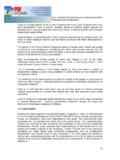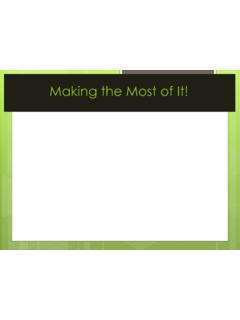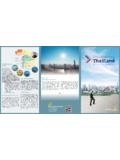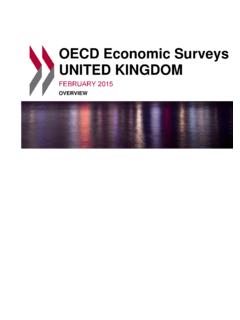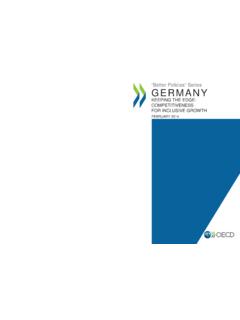Transcription of Mathematics programmes of study: key stages 1 and 2
1 Mathematics programmes of study: key stages 1 and 2 National curriculum in England September 2013 2 Contents Key stage 1 years 1 and 2 5 Year 1 programme of study 6 Year 2 programme of study 11 Lower key stage 2 years 3 and 4 17 Year 3 programme of study 18 Year 4 programme of study 24 Upper key stage 2 years 5 and 6 30 Year 5 programme of study 31 Year 6 programme of study 39 Mathematics Appendix 1: Examples of formal written methods for addition, subtraction, multiplication and division 46 Mathematics key stages 1 and 2 3 Purpose of study Mathematics is a creative and highly inter-connected discipline that has been developed over centuries, providing the solution to some of history s most intriguing problems.
2 It is essential to everyday life, critical to science, technology and engineering, and necessary for financial literacy and most forms of employment. A high-quality Mathematics education therefore provides a foundation for understanding the world, the ability to reason mathematically, an appreciation of the beauty and power of Mathematics , and a sense of enjoyment and curiosity about the subject. Aims The national curriculum for Mathematics aims to ensure that all pupils: become fluent in the fundamentals of Mathematics , including through varied and frequent practice with increasingly complex problems over time, so that pupils develop conceptual understanding and the ability to recall and apply knowledge rapidly and accurately.
3 Reason mathematically by following a line of enquiry, conjecturing relationships and generalisations, and developing an argument, justification or proof using mathematical language can solve problems by applying their Mathematics to a variety of routine and non-routine problems with increasing sophistication, including breaking down problems into a series of simpler steps and persevering in seeking solutions. Mathematics is an interconnected subject in which pupils need to be able to move fluently between representations of mathematical ideas. The programmes of study are, by necessity, organised into apparently distinct domains, but pupils should make rich connections across mathematical ideas to develop fluency, mathematical reasoning and competence in solving increasingly sophisticated problems.
4 They should also apply their mathematical knowledge to science and other subjects. The expectation is that the majority of pupils will move through the programmes of study at broadly the same pace. However, decisions about when to progress should always be based on the security of pupils understanding and their readiness to progress to the next stage. Pupils who grasp concepts rapidly should be challenged through being offered rich and sophisticated problems before any acceleration through new content. Those who are not sufficiently fluent with earlier material should consolidate their understanding, including through additional practice, before moving on. Information and communication technology (ICT) Calculators should not be used as a substitute for good written and mental arithmetic.
5 They should therefore only be introduced near the end of key stage 2 to support pupils conceptual understanding and exploration of more complex number problems, if written Mathematics key stages 1 and 2 4 and mental arithmetic are secure. In both primary and secondary schools, teachers should use their judgement about when ICT tools should be used. Spoken language The national curriculum for Mathematics reflects the importance of spoken language in pupils development across the whole curriculum cognitively, socially and linguistically. The quality and variety of language that pupils hear and speak are key factors in developing their mathematical vocabulary and presenting a mathematical justification, argument or proof.
6 They must be assisted in making their thinking clear to themselves as well as others and teachers should ensure that pupils build secure foundations by using discussion to probe and remedy their misconceptions. School curriculum The programmes of study for Mathematics are set out year-by-year for key stages 1 and 2. Schools are, however, only required to teach the relevant programme of study by the end of the key stage. Within each key stage, schools therefore have the flexibility to introduce content earlier or later than set out in the programme of study. In addition, schools can introduce key stage content during an earlier key stage, if appropriate. All schools are also required to set out their school curriculum for Mathematics on a year-by-year basis and make this information available online.
7 Attainment targets By the end of each key stage, pupils are expected to know, apply and understand the matters, skills and processes specified in the relevant programme of study. Schools are not required by law to teach the example content in [square brackets] or the content indicated as being non-statutory . Mathematics key stages 1 and 2 5 Key stage 1 years 1 and 2 The principal focus of Mathematics teaching in key stage 1 is to ensure that pupils develop confidence and mental fluency with whole numbers, counting and place value. This should involve working with numerals, words and the four operations, including with practical resources [for example, concrete objects and measuring tools].
8 At this stage, pupils should develop their ability to recognise, describe, draw, compare and sort different shapes and use the related vocabulary. Teaching should also involve using a range of measures to describe and compare different quantities such as length, mass, capacity/volume, time and money. By the end of year 2, pupils should know the number bonds to 20 and be precise in using and understanding place value. An emphasis on practice at this early stage will aid fluency. Pupils should read and spell mathematical vocabulary, at a level consistent with their increasing word reading and spelling knowledge at key stage 1. Mathematics key stages 1 and 2 6 Year 1 programme of study Number number and place value Statutory requirements Pupils should be taught to: count to and across 100, forwards and backwards, beginning with 0 or 1, or from any given number count, read and write numbers to 100 in numerals; count in multiples of twos, fives and tens given a number, identify one more and one less identify and represent numbers using objects and pictorial representations including the number line, and use the language of: equal to, more than, less than (fewer), most, least read and write numbers from 1 to 20 in numerals and words.
9 Notes and guidance (non-statutory) Pupils practise counting (1, 2, ), ordering (for example, first, second, ), and to indicate a quantity (for example, 3 apples, 2 centimetres), including solving simple concrete problems, until they are fluent. Pupils begin to recognise place value in numbers beyond 20 by reading, writing, counting and comparing numbers up to 100, supported by objects and pictorial representations. They practise counting as reciting numbers and counting as enumerating objects, and counting in twos, fives and tens from different multiples to develop their recognition of patterns in the number system (for example, odd and even numbers), including varied and frequent practice through increasingly complex questions.
10 They recognise and create repeating patterns with objects and with shapes. Mathematics key stages 1 and 2 7 Number addition and subtraction Statutory requirements Pupils should be taught to: read, write and interpret mathematical statements involving addition (+), subtraction ( ) and equals (=) signs represent and use number bonds and related subtraction facts within 20 add and subtract one-digit and two-digit numbers to 20, including zero solve one-step problems that involve addition and subtraction, using concrete objects and pictorial representations, and missing number problems such as 7 = 9. Notes and guidance (non-statutory) Pupils memorise and reason with number bonds to 10 and 20 in several forms (for example, 9 + 7 = 16; 16 7 = 9; 7 = 16 9).










